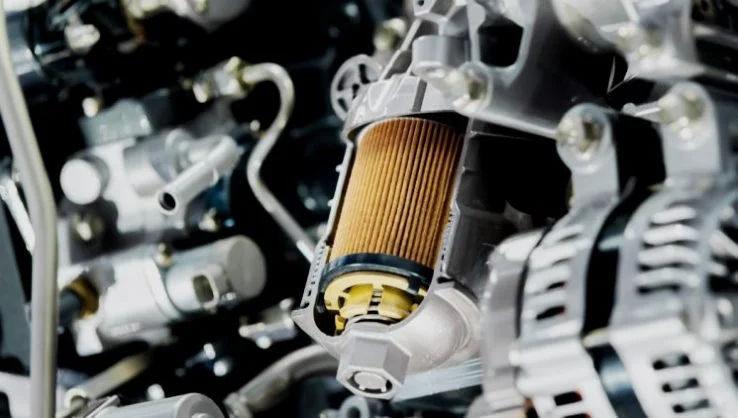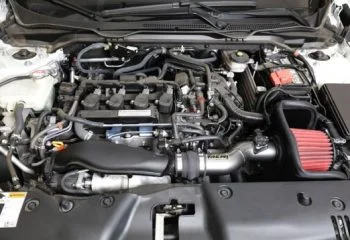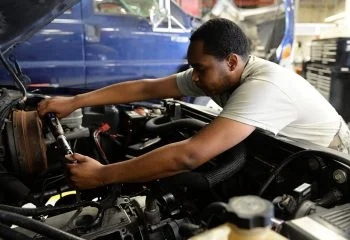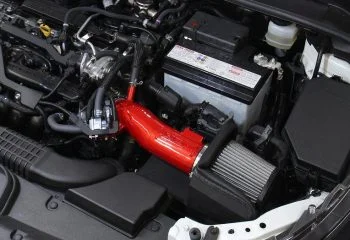The fuel filter is an important part of your car that needs to be kept clean.
A dirty fuel filter can cause all sorts of problems with your car, including decreased performance, reduced gas mileage, and even engine damage.
Cleaning the fuel filter on a regular basis is the best way to keep it functioning properly and protect your car. Luckily, this is a job that you can do yourself with just a few simple tools.
In this post, we’ll show you how to clean fuel filter and keep your car running smoothly. Stay tuned!
What's in this post?
How To Clean Car Fuel Filters Step by Steps
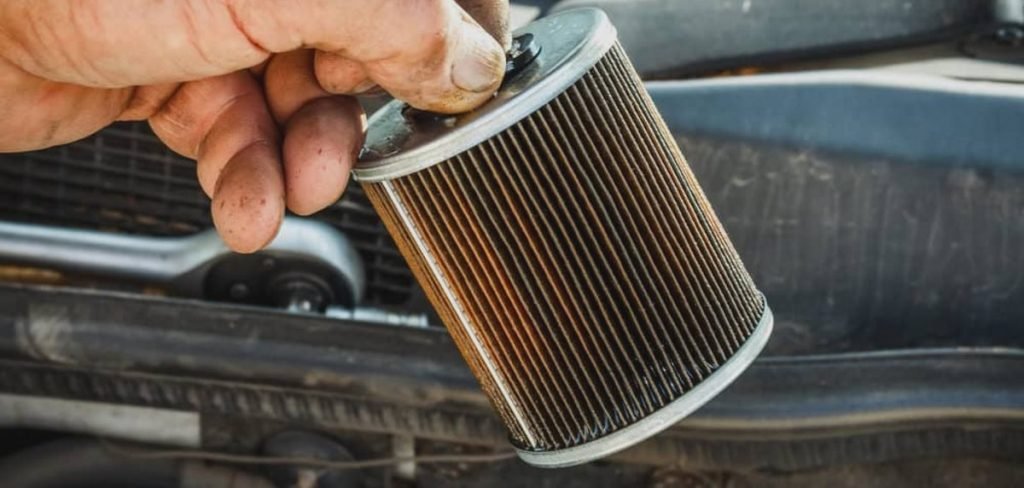
Tools you will need:
- Jack
- Socket wrench
- Replacement fuel filter (optional)
- Rags or paper towels
- Container
- Solvent cleaner
Step 1: Relieve the pressure of fuel system
Before you begin, you need to relieve the pressure from the fuel system. This can be done by removing the fuse that controls the fuel pump.
Once the fuse is removed, start the engine and let it run for two minutes. You may hear some splattering sounds as the car runs, which is normal. After two minutes, turn off the engine.
Step 2: Disconnect the negative terminal of the battery
Once the pressure is released, you can disconnect the negative terminal of the battery. This will prevent any sparks from occurring when you’re working on the fuel filter.
To disconnect the negative terminal of the battery, you’ll need a socket wrench. Remove the bolt that holds the negative terminal in place, then pull the terminal off of the battery.
Step 3: Locate The Fuel Filter
The fuel filter is usually located near the fuel tank. In most cases, it will be mounted on the frame or under the car. Consult your owner’s manual for the exact location of the fuel filter on your car.
Step 4: Jack up the car
Once you’ve located the fuel filter, you’ll need to jack up the car so that you can access it easily. Be sure to use jack stands to support the car while you’re working on it.
You’ll need a reliable part of your auto that can be used for this purpose, so consult an expert if necessary or do some research before hand!
Once you have determined which parts of your home work well during lifting procedures, you will want to position them properly.
Remember to observe safety precautions such as not derailing any wheels.
Always be aware of your surroundings when working near moving objects, as accidents can happen even when we are careful.
Step 5: Disconnect The Fuel Line
Once you’ve located the fuel filter, you’ll need to disconnect the fuel line leading to it.
When performing maintenance on your car’s fuel filter, it is important to take precautions to ensure that no fuel is exposed to the spray.
This can be done by opening the clamp in the fuel line and tightening it with a flat head screwdriver.
Once the hose is clamped shut, you can be confident that no fuel will be sprayed or exposed. By taking these simple steps, you can avoid any dangerous accidents or spills.
Step 6: Remove The Fuel Filter
The next step is to remove the fuel filter. In most cases, it will be held in place by a few bolts. Use a wrench to remove these bolts and take out the filter.
Before you begin, it’s important to have the right tools and supplies on hand. You’ll need a container to catch the fuel, and you’ll also need a pair of pliers or a clamp to secure the fuel filter. Once you have everything you need, you can begin the process of changing the fuel filter.
Start by placing the container under the fuel filter. Then, use the pliers or clamp to open the cap on the filter. Next, attach the filter to the hose and begin to tighten the clamp.
As you do so, you may need to pull on the hose to help seat the filter in place. Once the clamp is tight, you can remove all of the hoses from the filter. Doing so will allow any remaining fuel in the system to drain out smoothly.
Step 7: Inspect the old filter
Now that you have removed the filter, take a close look at it to see how dirty it is. If it is excessively dirty, then it may be time to replace it altogether. Otherwise, you can proceed to clean it.
Step 8: Cleaning the filter
When it comes to cleaning the fuel filter on your car, there are a few different methods you can use.
One is to hold the fuel filter part and insert the hose into the inside. Then spray the fuel filter using a solvent cleaner.
Attach the nozzle to the spray section and insert it into the other end that leads into the filter and spray. Let everything come in and out of the bottle. You have to repeat this step from both ends.
Another method is to use a screwdriver by pressing on the handle. Make sure that you can properly tap all the circles on the fuel filter surface of the car.
When you are finished, make sure to spray the fuel filter again to not miss any spots and dry it for about 1 hour.
Step 9: Reinstall The Filter
After you’ve cleaned or replaced the fuel filter, it’s time to reinstall it. Begin by attaching the hoses to the new filter, then tighten the clamp.
Next, reconnect the negative terminal of the battery and start the car. Allow it to run for a few minutes so that the filter can prime itself.
Step 10: Looking for leaks
Now that you’ve completed the process of changing the fuel filter, it’s important to check for any leaks. Start the car and let it run for a few minutes. Then, turn it off and check around the fuel filter for any signs of leakage.
If you see any fuel leaking, you’ll need to tighten the bolts or replace the filter. Once you’re satisfied that there are no leaks, you can put away your tools and enjoy the peace of mind that comes with knowing your car is in good working order.
How do I know if my fuel filter is dirty?
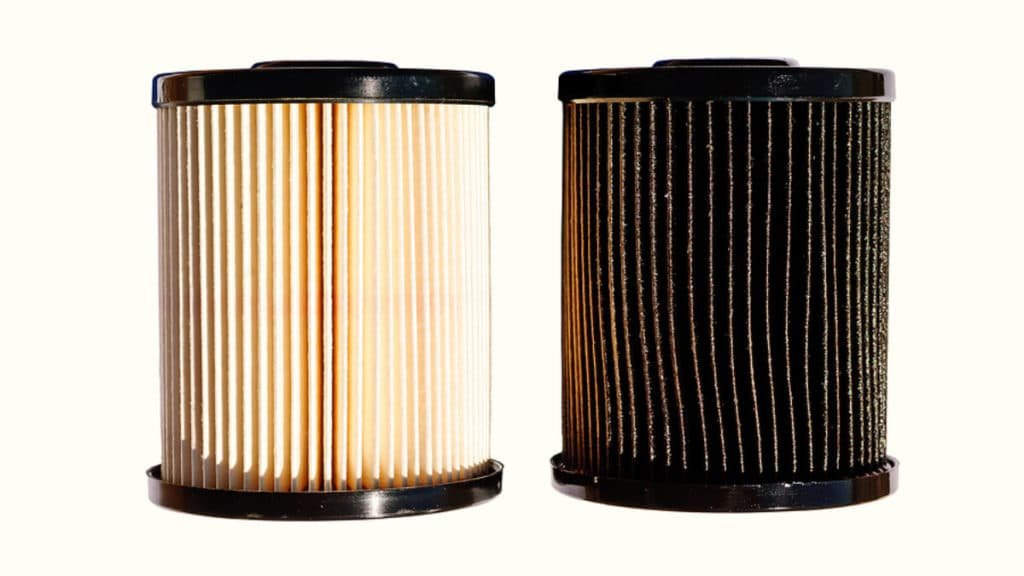
As your car’s engine burns fuel, it produces a variety of pollutants that can build up in the fuel filter and cause problems.
If the filter becomes clogged, it can restrict fuel flow and lead to engine performance issues.
In extreme cases, a dirty fuel filter can even cause the engine to stall. There are a few telltale signs that your fuel filter might be due for a change.
If you notice that your car is struggling to start, or if the engine is hesitating or stalling, it could be a sign that the filter is restricted.
You may also notice a decrease in power or mileage, as the engine has to work harder to overcome the restriction.
If you think your fuel filter might be dirty, it’s best to have it checked by a mechanic. They can inspect the filter and let you know if it needs to be replaced.
How often should I clean my fuel filter?
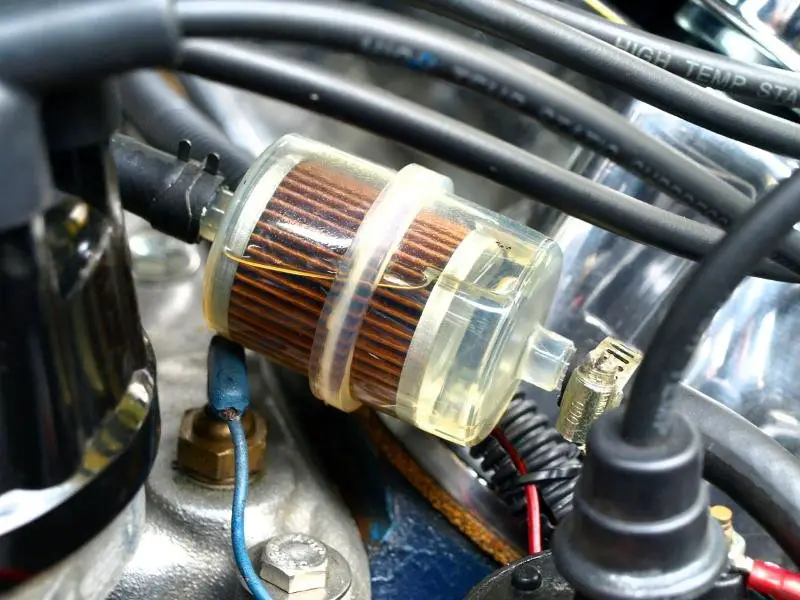
Keeping your fuel filter clean is an important part of maintaining your vehicle.
A clean fuel filter helps to keep your engine running smoothly and prevents damage to other parts of the fuel system.
Most manufacturers recommend that you clean or replace your fuel filter every 20,000-30,000 miles. However, if you frequently drive in dusty or dirty conditions, you may need to clean it more often.
If your engine starts to run rough or hesitate, it may be a sign that your fuel filter needs to be cleaned. Read how often to change the fuel filter for more details.
You can clean the filter yourself with a few simple tools, or you can have a mechanic do it for you. Either way, it’s important to keep your fuel filter clean for the sake of your engine.
Cleaning vs changing fuel filter: Which is better?
Many people believe that cleaning the filter is sufficient, while others contend that changing the filter is a necessary step in keeping the vehicle running smoothly.
Both methods have their pros and cons, and ultimately it is up to the vehicle owner to decide which is best for their particular situation.
Cleaning the fuel filter is often seen as the cheaper option, as it does not require replacing the filter. Additionally, it can be done more frequently if needed.
However, cleaning the fuel filter does not remove all of the contaminants that may be present, and over time these build up and can cause damage to the engine.
Replacing the filter is more expensive, but it ensures that all of the contaminants are removed from the system.
It is also important to note that changing the filter according to the manufacturer’s recommendations will help to extend the life of the engine and prevent costly repairs down the road.
FAQs about How to Clean Fuel Filter
Do all vehicles have a fuel filter?
Yes. Fuel filters are a common feature on all types of vehicles, from cars to trucks to motorcycles.
Do older cars have fuel filters?
Yes. The fuel filter on old cars is located under or near the gas tank on older models. It’s easy to find because most often it will be attached directly to your vehicle firewall, close by where you fill up with fuel!
Why do new cars not have fuel filters?
Newer vehicles are equipped with a filter inside the gas tank. The filters can be removed and rinsed, but they should only ever need replacing when you change out your fuel pump assembly!
Is removing an oil filter different than remove a fuel filter?
Removing an oil filter can be a bit more tricky than removing a fuel filter, as the former is usually stuck on tighter. However, with the right tools and a bit of elbow grease, it’s definitely doable. To remove a stuck oil filter, first, place a Rag over the end of the filter to protect your hand. Then, use an Oil Filter Wrench to loosen the filter by turning it counterclockwise.
Once it’s loose, unscrew it by hand and discard it. You may need to use some pliers to remove the old O-ring from the housing; if so, be careful not to damage the housing. Finally, install the new filter, using a new O-ring if necessary, and screw it on hand-tight before tightening with the wrench. And that’s it – you’ve successfully removed and replaced your oil filter!
What problems can a bad fuel filter cause?
The low fuel pressure that results from a clogged filter can cause an engine misfire and poor gas mileage. This is because it makes the car run rough, have trouble starting up or idle badly when you turn on your lights at night for example- all things which would be considered normal but now seem like major problems!
Does the fuel pump include a fuel filter?
The fuel filter is a critical component in your car’s engine that must be replaced every 5 years or around 30,000 – 50,000 miles. The specific service interval will depend on the make and model of vehicle you have, but it should wear out before other parts such as spark plugs do!
Conclusion
Now you know how to clean your fuel filter. Remember, it’s important to keep your vehicle in good condition so that you can avoid costly repairs down the road.
Make sure you give yourself plenty of time to complete this project; it should take about an hour from start to finish.
If you have any questions or run into any problems while cleaning your fuel filter, be sure to reach out to a trusted mechanic for assistance.

